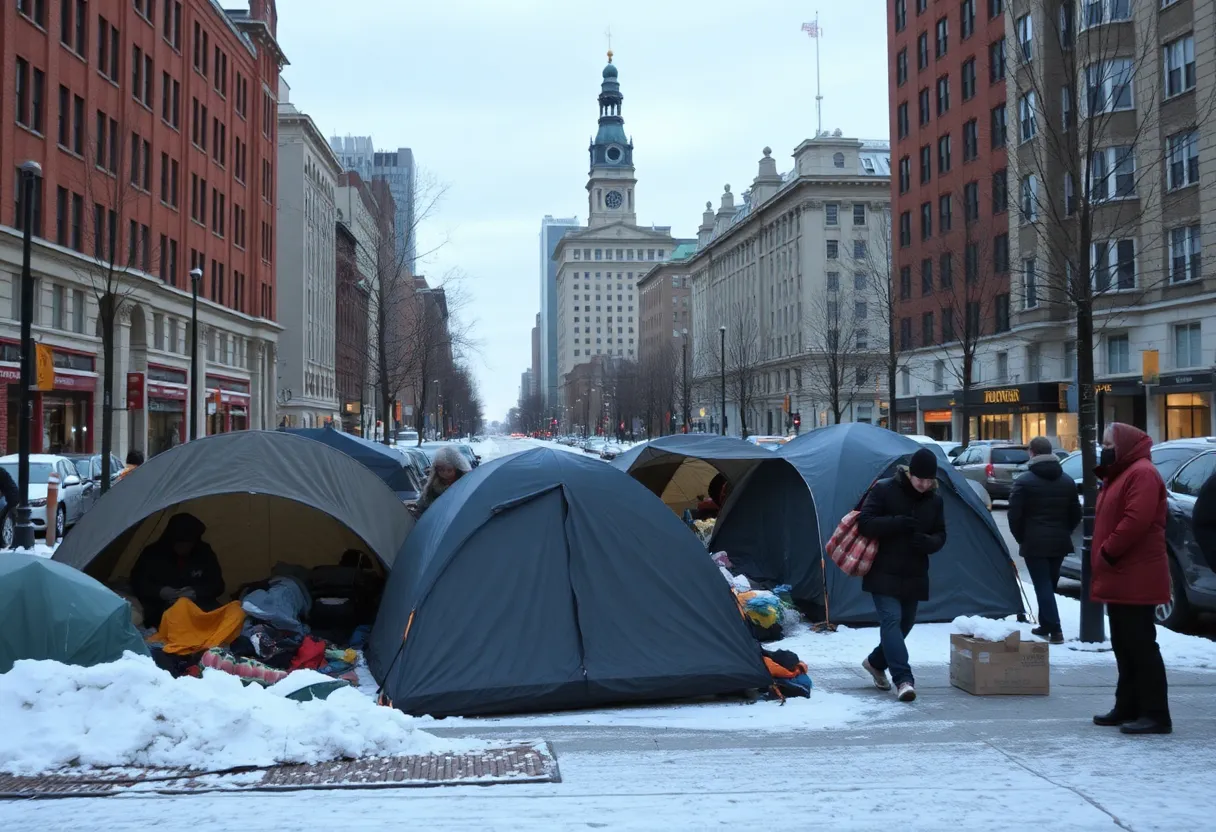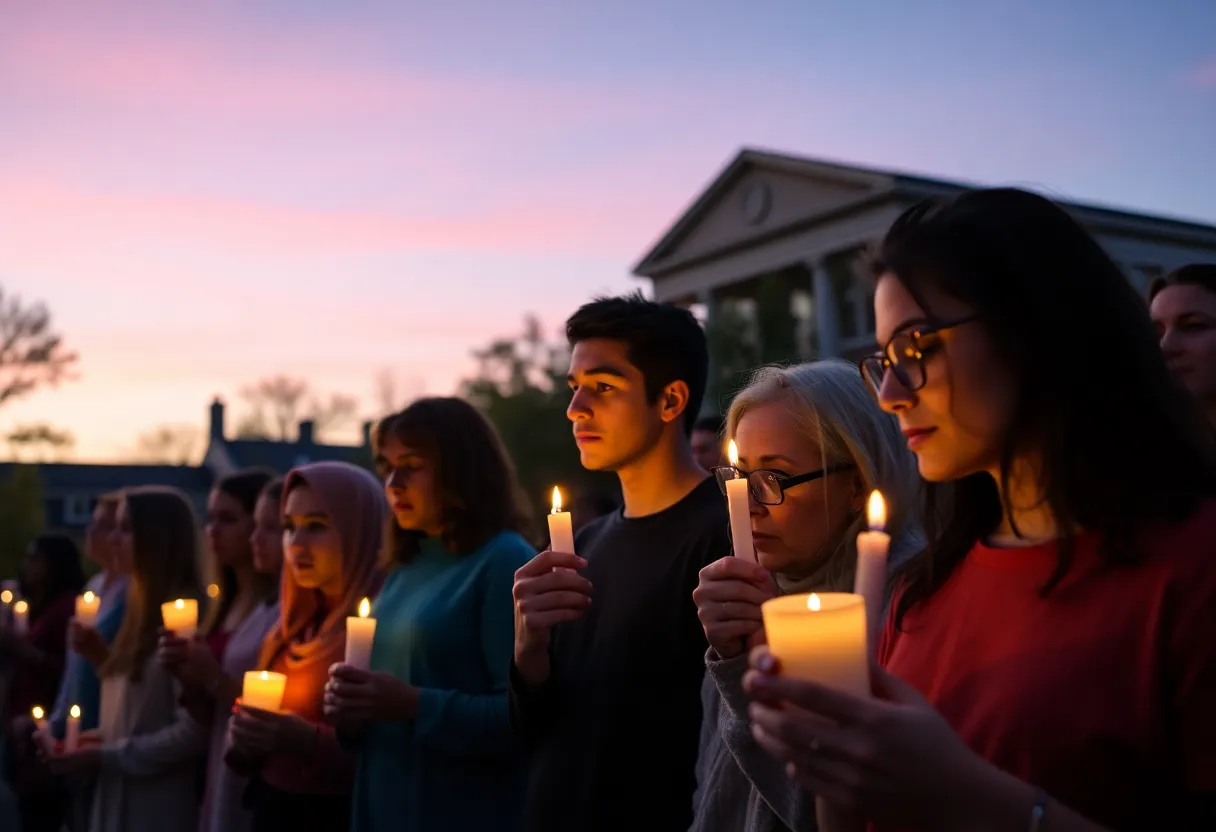News Summary
Providence, Rhode Island, has recorded its first decline in the number of unhoused individuals in six years, with at least 2,373 individuals counted. This 2.8% decrease from the previous year highlights ongoing challenges of shelter bed shortages and chronic homelessness, with experts expressing concern about the implications of these figures during winter. While there is progress in transitional housing, advocates urge government action to address the continuing crisis.
Providence Sees First Decline in Unhoused Population in Six Years Amid Shelter Bed Shortages
Providence, Rhode Island, has reported a decrease in the number of unhoused individuals for the first time in six years. The annual winter census, conducted by the Rhode Island Coalition to End Homelessness on January 21, 2025, revealed that at least 2,373 unhoused individuals were counted across the state. This represents a 2.8% decrease from the record high of 2,442 reported in 2024. Despite this decline, the data also highlights a growing concern regarding shelter bed shortages and the increase in chronic homelessness.
Current Census Findings
The temperature dropped to around 18 degrees Fahrenheit in Providence on the night of the census, emphasizing the urgency of addressing homelessness during harsh winter conditions. More than 40% of those counted had been experiencing homelessness for over a year. The census also recorded a worrying increase of more than 15% in the number of individuals living without stable housing, totaling 618 people. This group includes those living in cars, tents, or abandoned buildings, with the figure rising from 534 to 618.
Approximately 66% of the unsheltered population has been classified as “chronically homeless,” meaning they have been without housing for more than a year and are facing additional challenges such as substance abuse or mental health disorders. Within this context, the census identified 1,022 individuals as chronically homeless.
Impact of Shelter Bed Shortages
Despite the overall decrease in the unhoused population, experts have indicated that the decline is attributed to fewer emergency shelter beds available. In January 2025, Rhode Island had 1,826 shelter beds, a decrease of 71 beds compared to the previous year. Advocates are voicing concerns about the implications of this shortage, particularly during the winter months when shelter is critical.
The Rhode Island Coalition to End Homelessness noted that families experiencing homelessness also saw a slight decrease of 1.1%, with no unsheltered families counted in this year’s census. There was a slight increase in transitional housing availability, with three new beds added, and 37 new permanent supportive housing units created, showcasing some progress despite the pressing challenges.
Government Response and Future Concerns
In light of the census findings, advocates have called for Governor Dan McKee to declare a state of emergency to address the shortage of shelter beds during the winter months. However, the governor has resisted these calls, citing concerns regarding potential regulatory issues and the lack of federal funding that such a declaration would bring.
Advocates fear that the homeless population in Rhode Island may rise again due to potential funding cuts for social programs, particularly under the Trump administration and Congressional Republicans. The state’s homeless crisis persists, with various reports over the last few years indicating significant increases in the unhoused population, including a 35% increase from 2023 to 2024.
Challenges Facing Homeless Services
The Rhode Island Department of Housing is currently working to address the ongoing crisis by increasing investments in affordable housing and emergency shelter capacity. However, there are criticisms regarding the adequacy of local government responses to homelessness, with calls for treating the situation as a public health emergency.
Moreover, the recent weather patterns have intensified the risks associated with homelessness in Rhode Island, urging government intervention for emergency shelter responses. As the Coordinated Entry System (CES) faces overwhelming call volumes and staffing shortages, it has struggled to effectively connect individuals with available resources.
The opening of ECHO Village, a community of 45 pallet shelters off Route 146 in Providence, on February 11, 2025, marks a response to some of these challenges. However, delays related to building code compliance reflect broader issues with recognizing and prioritizing the state’s housing crisis.
Conclusion
The decrease in Rhode Island’s unhoused population, while a positive development, underscores a complex landscape marked by shelter shortages and the critical need for a comprehensive response to homelessness. As the state navigates these challenges, the ongoing rise in chronic homelessness and the demand for adequate shelter services remain significant concerns for advocates and policymakers alike.
Deeper Dive: News & Info About This Topic
HERE Resources
Providence Prepares for Extreme Heat Wave Support for Unhoused
Rhode Island Faces Affordable Housing Crisis Amid Rising Demand
Advocates rally for homeless funding outside Rhode Island State House
Additional Resources
- Rhode Island Current: Homelessness is Down but More People are Out in the Cold
- Boston Globe: Strangers Help Homeless Rhode Island Writer
- GoLocalProv: RI Continues to Place Homeless in Hotels
- Wikipedia: Homelessness in the United States
- Turn to 10: Rhode Island Homeless Population Double the National Average

Author: STAFF HERE PROVIDENCE WRITER
The PROVIDENCE STAFF WRITER represents the experienced team at HEREProvidence.com, your go-to source for actionable local news and information in Providence, Providence County, and beyond. Specializing in "news you can use," we cover essential topics like product reviews for personal and business needs, local business directories, politics, real estate trends, neighborhood insights, and state news affecting the area—with deep expertise drawn from years of dedicated reporting and strong community input, including local press releases and business updates. We deliver top reporting on high-value events such as WaterFire, Rhode Island International Film Festival, and Rhode Island Comic Con. Our coverage extends to key organizations like the Greater Providence Chamber of Commerce and Providence Warwick Convention & Visitors Bureau, plus leading businesses in finance and manufacturing that power the local economy such as Citizens Financial Group and Textron. As part of the broader HERE network, we provide comprehensive, credible insights into Rhode Island's dynamic landscape.





